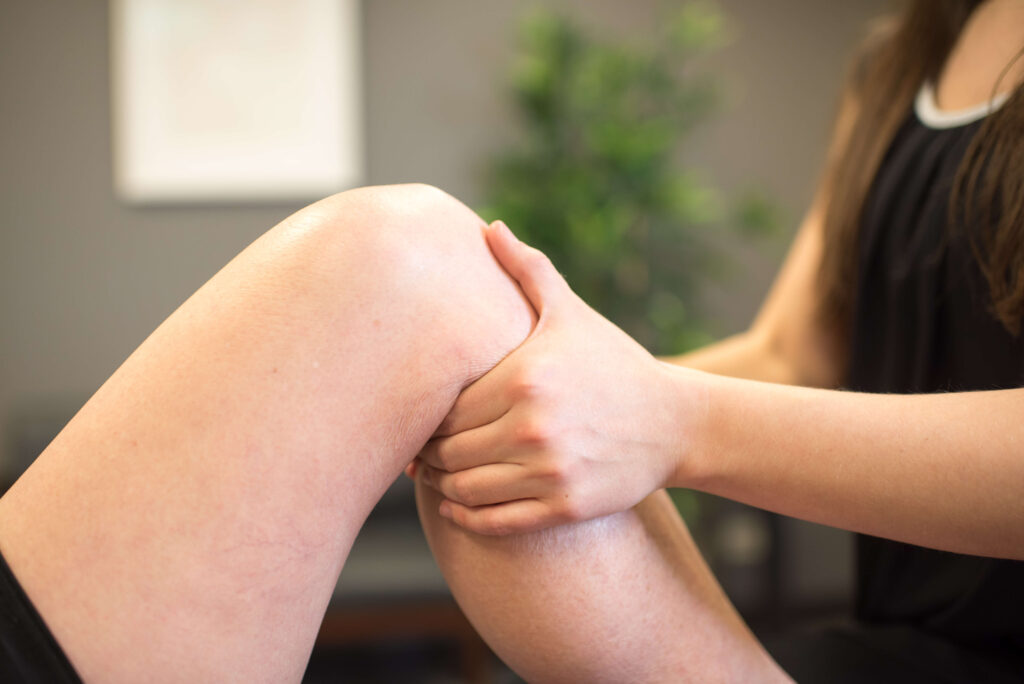Pain surrounding the knee cap, or patellofemoral pain, is a common problem for both athletes and non-athletes. Also referred to as “runner’s knee”, patellofemoral pain syndrome is typically characterized by pain when ascending and/or descending stairs, squatting and kneeling, and some patients may also complain of clicking and popping near the knee cap. Physical therapy is often successful in treating patellofemoral pain through lower extremity strengthening, education, activity modification and taping techniques.
Strengthening of the muscles surrounding the knee is particularly important in the treatment of patellofemoral pain. Weakness of the medial aspect of the quadriceps, called the vastus medialis oblique (VMO), is a common finding in those with patellofemoral pain. Physical therapists will often have the patient perform exercises with the aim of enhancing the muscle activation of this part of the quads.
Strengthening of the muscles surrounding the hip is equally as important as the strengthening of the knee itself. The hip musculature controls the position of the knee during activities like running and walking. If the muscles are weak, excessive forces are inflicted on the knee which may elicit pain and progressive deterioration of the patellofemoral joint. Physical therapy would focus on improving strength in the gluteal muscles in order to ensure proper lower extremity alignment as well as neuromuscular control with functional and recreational activities.
Physical therapists may also often use taping techniques to reduce patellofemoral related pain and improve muscle function. The most common taping technique used for this condition is called McConnell taping and is very effective in reducing knee pain. The mechanism of pain reduction is somewhat clear, but it has been suggested that the tape reduces the compression of the patella in the patellofemoral joint and may even aid in normalizing the alignment of the patella. Other taping techniques can also be used to facilitate the muscle activation of the quadriceps.
The majority of the physical therapy treatment for patellofemoral pain consists of at home exercises and various therapy based activities tailored to the patient’s specific needs.




